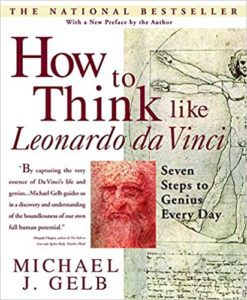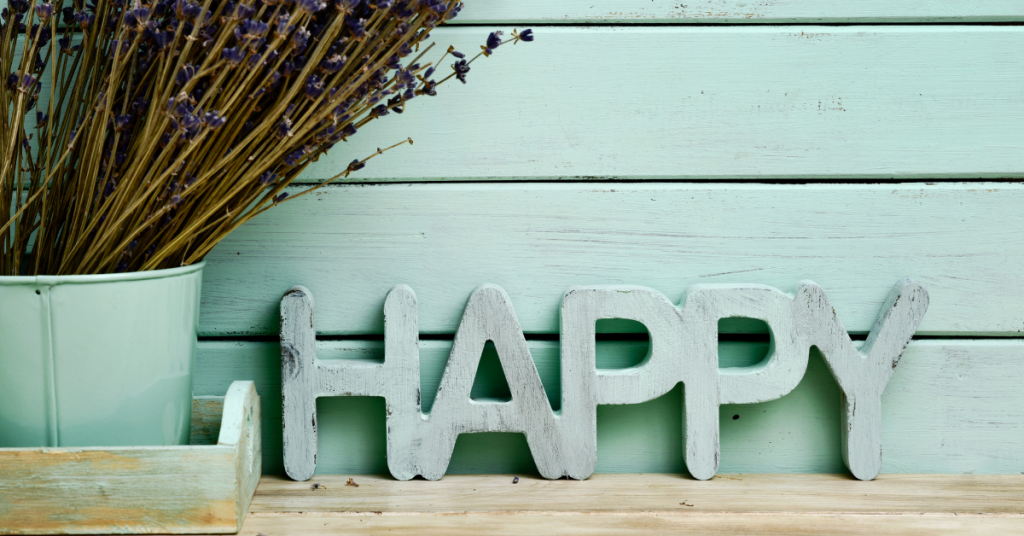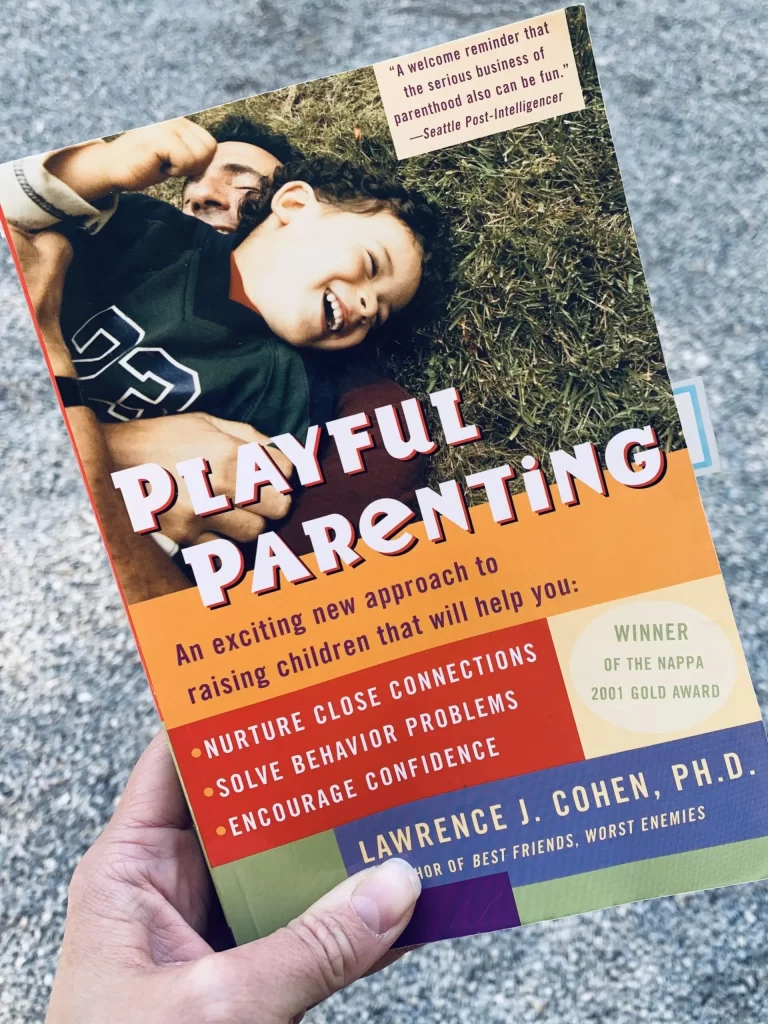 How to think like Leonardo Da Vinci. Book Summary
How to think like Leonardo Da Vinci. Book Summary
Seven steps to genius everyday
Michael Gelb
Element; New edition edition (15 Mar. 2004)
About the author:
Michael Gelb is the world’s leading authority on applying genius thinking to personal and organisational development. He is a pioneer in the fields of creative thinking, accelerated learning, and innovative leadership. Gelb leads seminars for organisations such as DuPont, IBM, Merck, Microsoft, Nike, and YPO. He brings more than 30 years of experience as a professional speaker, seminar leader and organisational consultant to his diverse, international clientele. Michael is the author of 16 books, which have been translated into 25 languages and have sold more than one million copies.
About the book
In this book, Michael Gelb teaches us how to develop our full potential by following the example of the greatest genius of all time, Leonardo da Vinci. Drawing on Da Vinci’s notebooks, inventions, and legendary works of art, Gelb breaks down Da Vinci’s genius into seven essential attributes and provides a fun and powerful framework complemented with incredible exercises that help us develop our creativity and fully express our unique genius. Great book with loads of practical tools to develop your (and your child’s) genius – highly recommend!
Key ideas from the book
“It was with the idea of finding the principles underlying Leonardo’s limitless creativity that I began my work on the book you are now holding in your hands. The seven principles I eventually identified were simply my attempt to write the how-to guide that Leonardo never put down on paper, to codify the principles implicit in Leonardo’s work so that they can be used by others. I feel very strongly that the genius of Leonardo resides not just in what he created by in what he can inspire us to create. Beyond all his stellar achievements, Leonardo da Vinci serves as a global archetype of human potential, giving us intimations of what we ourselves may be capable of doing.”
Leonardo Da Vinci was a fascinating human being. He was not only the leading artist (Mona Lisa, Last Supper, etc.) of his time, but also an incredible inventor (flying machine, parachute, helicopter), military engineer (machine gun, submarine), musician, and scientist (he has anticipated many great scientific discoveries like the theory of gravitation, evolution of man, etc). But How was he able to do it?
The seven principles of Da Vinci’s Genius
After an introduction to da Vinci’s life, Gelb walks us through the seven attributes of da Vinci’s genius:
1. “Curiosità—An insatiably curious approach to life and an unrelenting quest for continuous learning.
2. Dimonstratzione—A commitment to test knowledge through experience, persistence, and a willingness to learn from mistakes.
3. Sensazione—The continual refinement of the senses, especially sight, as the means to clarify experience.
4. Sfumato (literally ‘Going up in Smoke’)—A willingness to embrace ambiguity, paradox, and uncertainty.
5. Arte/Scienza—The development of the balance between science and art, logic and imagination. ‘Whole-brain thinking.’
6. Corporalita—The cultivation of grace, ambidexterity, fitness, and poise.
7. Connessione—A recognition and appreciation for the connectedness of all things and phenomena. Systems thinking.”
The book is packed with exercises to practice each of the principles. Below are our favourite ideas that you can start implementing to your life today.
Keep a journal like Da Vinci
“Leonardo da Vinci carried a notebook with him at all times so that he could jot down ideas, impressions, and observations as they occurred. His notebooks (seven thousand pages exist; most scholars estimate this is about one half of the amount he left to Francesco Melzi in his will) contained jokes and fables, the observations and thoughts of scholars he admired, personal financial records, letters, reflections on domestic problems, philosophical musings and prophecies, plans for inventions, and treatises on anatomy, botany, geology, flight, water, and painting.”
Scientists proved that journaling can boost your happiness level. So grab a journal or notebook and start recording your observations, thoughts, insights, dreams like Leonardo. Carry it around and write regularly.
You can start with the Hundred Questions Exercise: in your journal make a list of 100 questions you find interesting. Write about whatever is meaningful for you. Questions can range from “How can I have more fun?” to “What is the meaning and purpose of my existence?”. Complete the list in one sitting (it will take you about 1 hr).
Then read through your list and note the themes that emerge. Consider the themes you notice without judging them. Are your questions about Business? Relationships? Fun? Money? Spirituality? The Meaning of Life?
Once you’ve done that, review your list of 100 questions and choose the 10 that you find most significant. Then rank them in importance from 1 to 10. And that will be a great step forward towards personal growth and fulfilment ☺
P.S.: check out our notes on The How of Happiness by Sonja Lyubomirsky and Flourish by Martin Seligman for journaling exercises. And by the way, as Austin Kleon suggests in his fantastic book Steal Like an Artist, journaling is a great way to boost your creativity!
Affirmations
“Although he experienced self-doubt and questioned the value of his efforts, he never gave up. Leonardo’s courage and persistence in the face of adversity are tremendously inspiring. He strengthened his will to continue his work through affirmations that he wrote in his notebook, such as:
‘I do not depart from my furrow.’ ‘Obstacles do not bend me.’
‘Every obstacle is destroyed through rigor.’ ‘I shall continue.’
‘I never tire of being useful.’”
Affirmations are powerful. They help to build our resilience in the face of adversity. So when writing affirmations in your journal, try to use “I feel” affirmations to trigger a more emotional, heart-centred response. “I am” affirmations are widely used, but they mostly refer to intellectual/cognitive response. E.g. “I feel worthy in my contribution to the world”, “I feel curious how to (resolve this problem, learn this subject)”
Develop your senses
“In addition to being the conduits of pleasure and pain, your senses are the midwives of intelligence.”
Train your senses – go to museums, practice silence, listen to classical music, seek out unusual or intense aromas, explore wine tasting, touch nature, learn to draw…
Visualisation is one of the best tools to sharpen all your senses, improve your memory, and prepare for accomplishing your goals in life (scientifically proven, btw!). It was an essential element of Da Vinci’s strategy for learning and creating.
Take time for solitude and relaxation
“Although Da Vinci loved exchanging ideas with others, he knew that his most creative insights came when he was alone. He wrote, “The painter must be solitary…For if you are alone you are completely yourself, but if you are accompanied by a single companion you are half yourself””
Solitude is super powerful. Best ideas come to our minds when we are relaxed and by ourselves. So take time for solitude (at least once or twice a week) – go for a walk or just sit quietly by yourself.
That also reminds of Mihaly Csikszentmihalyi – in his iconic book Flow, he writes:
“A person who rarely gets bored, who does not constantly need a favorable external environment to enjoy the moment, has passed the test for having achieved a creative life.”
Mind mapping
“Mind mapping is a whole-brain method for generating and organising ideas, originated by Tony Buzan, and largely inspired by Da Vinci’s approach to note taking. You can use mind mapping for personal goal setting, daily planning, and interpersonal problem solving. It can help you at work, with your kids, or with any pursuit. The most marvelous application of mind mapping, however, is that through regular practice it trains you to be a more balanced thinker, à la Leonardo.”
Mind mapping is brilliant. Our minds aren’t ordered linearly, and we want to give ourselves an organic structure that mirrors our minds and nature as we capture ideas. Check out the book for the rules of mind mapping inspired by Da Vinci.
Gelb also has a great framework on how to create a Mastermind map of your life – a fantastic way to outline your way to a happy and fulfilled life ☺ Briefly, the key steps are: 1) sketch the big picture of your dreams, 2) Explore your goals, 3) Clarify your core values, 4) contemplate your purpose, 5) assess current reality, 6) look for connections, 7) strategise for change
The body of a genius
“What is your image of the body type of a genius? Did you grow up, as I did, with the stereotype of the skinny, ‘four-eyed,’ brainiac nerd? It’s amazing how many people associate high intelligence with physical ineptitude. With a few exceptions, the great geniuses of history were gifted with remarkable physical energy and aptitude, none more so than Da Vinci.”
In addition to everything else that was amazing about Da Vinci, he was also an incredible athlete.
Gelb also says: “With a few exceptions, the great geniuses of history were gifted with remarkable physical energy and aptitude.”
Science says that exercising has a great positive effect on our brain. In the book, Gelb shares several ways we can rock our “grace, ambidexterity, fitness, and poise”. In short, exercise more consistently, eat more healthfully, get more rest ☺
Make dragons
“The ability to see relationships and patterns, and make unfamiliar combinations, is the core of creativity. Leonardo’s wonderful dragons, and many of his innovations and designs, arose from the fanciful connections he made between seemingly unrelated things. You can develop your Da Vincian powers by looking at things that at first glance seem unrelated, and finding different ways to link them.”
Leonardo noticed that “everything connecting to everything else”. Have a go and think about what does an oak leaf and a human hand have in common. Or mathematics and The Last Supper. Or the global economy and a portobello mushroom ☺
Seven principles for parents
Gelb gives a few tools for parents who want to develop Da Vincian genius in their kids:
- Curiosità—be a “curiosity coach” for your kids, encourage them to use the “What, When, Who, How, and Where, and Why” approach to creative problem-solving. Pick a “Genius of the Month” and discuss the types of questions that great minds have asked through the centuries. Encourage them to ask questions about everything around them.
- Dimonstratzione— nurture your child’s confidence (which literally means “to trust in one-self”) through unconditional love and enthusiastic encouragement (“I know you can do it!”). Treat mistakes as learning opportunities and provide them with constructive feedback (growth mindset style)
- Sensazione – take every opportunity to create a reach and refined sensory environment for your child (and of course, cuddles are super important for brain development). Expose your child to art, drawing, music and beauty in general.
- Sfumato – expose your children to games, puzzles and stories (make up stories for them – this will help to develop your sfumato as well)
- Arte/Scienza – support your children in developing both sides of the brain by focusing equally on Art and Science skills (developing “balanced brain”). Teach your children how to use mind/memory maps to facilitate learning.
- Corporalita – encourage good posture, physical activity and healthy eating, be a good example by yourself!
- Connessione – think about your family dynamics and ask yourself a question – “how can I apply my emerging understanding of family systems to be a more conscious, loving parent? How can I avoid passing on to my children the unresolved issues and unconscious vestiges of the family dynamics with which I was raised?” Play the Make Dragons game with your kids to encourage their creativity. Think about the origins of things around you together (like food, clothes, computer, etc – consider all the elements involved in creation) to nurture your child’s sense of “everything connecting to everything else.”
P.S.: I actually thought about these ideas while reading Ulcca Joshi Hansen’s book The Future of Smart – when you think of it, she talks about holistic brain development in the context of education. Check out the book if you are interested in learning more about how schools can help kids develop their very own genius.
Action steps for you:
- Start journaling like Leonardo (and encourage your kids to do the same) – grab a notebook today
- Nurture your curiosity – keep asking questions! And use “What, When, Who, How, and Where, and Why” approach to creative problem solving (check out our article on curiosity)
- Practice Mind Mapping
Quotes from the book:









